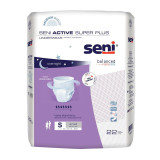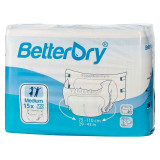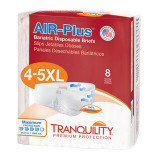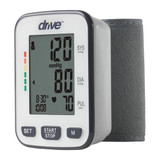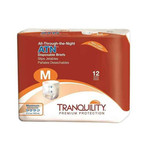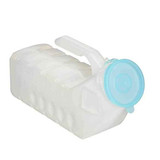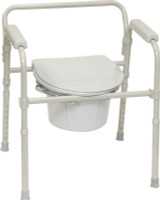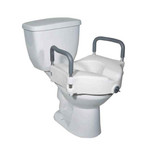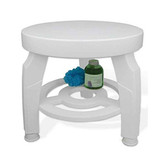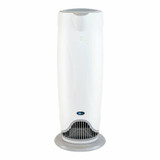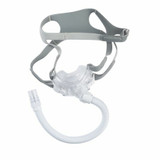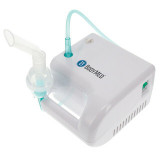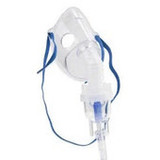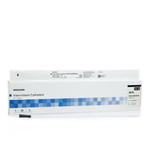
The Caregiver Guide - The Importance of Monitoring ADLs and IADLs
Introduction
It’s an undisputed fact that advancing age brings with it an increase in health issues in general. These issues are usually represented by a deterioration in functionality in some part of the body. People are affected in many different ways and varying different degrees of severity. There is, however, something that most older people have in common; an impairment in the capacity to perform ADLs (Activities of Daily Living) and IADLs (Instrumental Activities of Daily Living). This decline also affects people to widely varying degrees.
On a seemingly entirely different topic, we must recognize family caregivers as the backbone of long-term care in the US and, indeed, worldwide. According to this 2020 report published jointly by the National Alliance for Caregiving and AARP, approximately 53 million people in the US are caregivers, providing millions of hours of support for older adults and people with disabilities or chronic conditions. There is a very close link, though, between these caregivers and ADLs and IADLs.
An inherent aspect of a caregiver’s role is monitoring ADLs and IADLs. Understanding a loved one’s ability to carry out ADLs and IADLs and identifying changes in those abilities is crucial for assessing health and well-being. In this guide, we set out to introduce caregivers to ADLs and IADLs, explaining what they are and why monitoring them matters. We also explain how caregivers can incorporate assessments into regular care routines.
What are ADLs and IADLs
ADLs refer to basic daily self-care tasks that people do to live independently. The main ADLs are bathing, dressing, eating, transferring from bed to chair, walking, toileting, and maintaining continence. According to the NAC/AARP report, around 60% of caregivers reported helping their patients with at least one ADL. Getting in and out of beds and chairs is the most common at 41%, while getting dressed was second at 31%.
Difficulties with ADLs can be attributed to many different causes and can often signal potential disabilities or underlying health issues. For instance, arthritis can make dressing painful and dangerous to perform alone. Weakness after a stroke may inhibit someone from walking or transferring safely. In many cases, difficulty with ADLs may also be a marker for cognitive decline. Older adults also undergo age-related physiological changes such as decreased bone density, muscle loss, and reduced flexibility. These factors make ADLs much more challenging. Monitoring ADLs allows caregivers to identify changes early and take steps to improve function and prevent decline. Preserving independence in ADLs enhances dignity, autonomy, and overall well-being.
Exploring IADLs
While ADLs enable basic self-care, IADLs refer to more complex tasks needed to successfully live in the community successfully. IADLs include cooking, cleaning, shopping, managing medications, finances, and transportation. These activities require cognitive skills like memory, focus, organization, and judgment. Although we couldn’t find definitive recent data, various studies conducted up to 2020 estimate that between 10% and 20% of US adults over 65 reported difficulties with at least one ADL or IADL. Unlike ADLs, IADLs tend to decline earlier, often indicating cognitive impairment or early dementia. Monitoring IADLs provides crucial insight for care planning, safety, resource allocation, and early intervention.
Since IADLs require complex thinking abilities, changes often signal cognitive decline and impairments. Routine IADL screening provides valuable data to guide care planning and safety precautions. For example, noticing errors in balancing a checkbook may indicate a need for financial oversight. Getting lost driving familiar routes can prompt driving retirement discussions. Documenting and communicating IADL status with healthcare providers allows prompt referrals for cognitive testing if needed. Ongoing monitoring helps allocate appropriate resources and services to match emerging needs.
Benefits of Monitoring ADLs and IADLs
Monitoring ADLs and IADLs can provide critical information about an older adult's functional status and independence. Tracking ADLs like bathing, dressing, and eating gives caregivers insight into an individual's basic self-care abilities. Monitoring IADLs such as cooking, cleaning, and managing finances indicates whether someone can live independently.
Regular assessment of ADLs and IADLs has many advantages. It allows early detection of functional decline, which helps caregivers intervene with appropriate support services. For example, noticing difficulties with meal preparation may prompt setting up meal delivery or an in-home aide. Monitoring ADLs over time tracks disease progression and response to treatment in conditions like Alzheimer's. It also helps determine eligibility for health insurance coverage and long-term care programs.
Furthermore, ADL/IADL assessment aids in care planning and goal setting. Specific problem areas can be targeted with occupational therapy and other rehabilitative services. Progress can be measured, and new goals set accordingly. Caregivers can also determine the level of hands-on assistance needed for daily living. This helps assess whether independent living is still safe or requires a higher level of care.
The Caregiver’s Role in Monitoring ADLs and IADLs
As primary sources of long-term care, family caregivers are invaluable in monitoring ADLs and IADLs. Their daily intimate knowledge and direct assistance provide the most accurate, nuanced picture of abilities and changes. Setting a routine to observe and document ADL and IADL performance regularly ensures subtle issues are detected early. This monitoring routine should minimize unnecessary intrusion and disruption of daily life.
Creating a checklist to note task completion, behaviors, and any issues during the week engages the care recipient and provides helpful documentation. Daily check-ins on high-priority ADLs like medication adherence, eating, and hygiene can identify problems. More thorough weekly IADL screening spotlights emerging needs for additional support. Ongoing communication with the care recipient and their support network is vital. Input from doctors, nurses, therapists, and other healthcare professionals helps maximize functioning.
Despite your best efforts as a caregiver, the decline of functional capacity is sometimes relentless or, at best, can be slowed down or arrested but not reversed. In these cases, you must adapt your care plan to support your patient’s quality of life as much as possible. Healthy nutrition, regular exercise and sleep are the cornerstones of healthy living.
Coordinating suitable exercises and healthy nutrition on top of other caregiving duties may test your limits and you may want to enlist some external support. So, for any nutritional supplements, mobility aids, incontinence products and much more, contact the team at LL Medico. We have over 25 years of senior care experience, and we’d be glad to support you every step of the way.
Conclusion
ADLs and IADLs provide a crucial window into health, safety, and independence for caregivers. Monitoring and managing these daily living skills leads to better care outcomes. Observing performance and assisting with ADLs and IADLs enables early intervention at first signs of decline. Routine assessment guides care planning, resource allocation, and support strategies tailored to emerging needs. Most importantly, preserving ADL and IADL function helps older adults maintain engagement with meaningful activities and relationships.
Despite substantial demands, as a family caregiver, you play an invaluable role through diligent monitoring. Your compassion and commitment to providing person-centered care make a tremendous difference in the life of your care recipient. When you feel yourself buckling under the burden, remember the words of Carl W. Buehner, “They may forget what you said, but they will never forget how you made them feel.”










